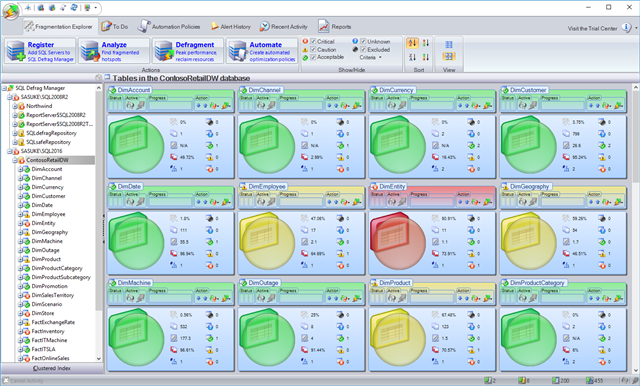As the data in the database tables of Microsoft SQL Server changes, their indexes change. Over time these indexes become fragmented so that ordered data retrieval becomes less efficient. Consequently, the fragmentation adversely affects the performance of SQL Server.
There are several types of fragmentation that can occur and impact SQL Server performance and space usage. Also, logical order and page density issues exist on tables and indexes within the database. These issues cannot be resolved by defragmentation tools at the level of the operating system because the fragmentation exists within the files, rather than at the level of the files themselves.
The completely free technical 11-page whitepaper “SQL Server Fragmentation Explained” provides information to help understand the detailed mechanics behind fragmentation. It will also help to understand the methods and approaches for performing defragmentation to improve the performance of SQL Server. It will help understand SQL Server fragmentation and the performance benefits for SQL Servers by continuously monitoring and managing index fragmentation. It is intended for database administrators who want to truly understand the details and critical components of fragmentation in SQL Server.
The following is a summary of the key topics covered in the whitepaper:
- The difference between disk and SQL Server internal and external fragmentation
- How fragmentation affects performance
- The mechanics behind performance robbing data voids
- The pros and cons of various approaches to managing fragmentation
- How SQL Defrag Manager provides a better, more efficient and automated approach to identifying and resolving index fragmentation in SQL Server
- How to judge the improvements gained by defragmenting servers
The author, Juan Rogers, was the product manager and evangelist of the portfolio of security and compliance products of IDERA.
Read the whitepaper, view the infographic “Why Use SQL Defrag Manager”, watch the overview video, browse the datasheet, download a fully functioning 14-day trial, request a one-on-one demonstration, and request a price quotation.
